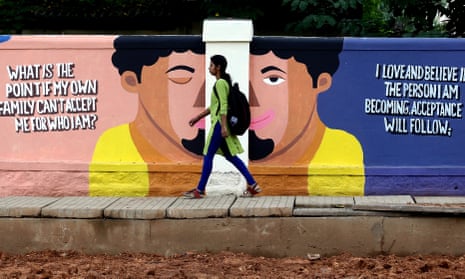On a sunny morning at Calcutta Pavlov Hospital, 600 people wait patiently in the outpatient department. For many, the journey to see a doctor started hours before sunrise, with some even travelling overnight to secure their place in line. Despite waiting for hours, most will spend just 90 seconds with the psychiatrist.
One of the doctors on call, Dr Debananda Saha, expects to treat about 250 patients during his seven-hour shift at the government hospital.
“These patients travel from very remote areas. They left home at two in the morning, just to talk to a doctor for one minute,” he says. “If I spent half an hour with each patient, I would not be able to see them all.”
His workload is typical of most government hospitals in India and reflects the scale of the country’s mental healthcare crisis. As the number of people suffering from mental illnesses continues to rise, the “treatment gap” of medical professionals to tend them remains one of the largest in the world.
The National Mental Health Survey, commissioned by the Indian government and carried out by the National Institute of Mental Health and Neurosciences (Nimhans), found that 150 million Indians (10.6% of adults) were suffering from a mental health disorder in 2016. A report by the World Health Organization in 2017 found there were fewer than two mental health professionals for every 100,000 people, drastically lower than the global average of nine.
The crisis is expected to worsen, and many experts say it could have serious economic, social and cultural consequences. Between 2012-2030, WHO estimates that India’s mental health emergency will cost the economy more than $1tn in lost productivity (as measured in 2010 US dollars).
“Right now, the people of this country are suffering,” says psychiatrist Dr Soumitra Pathare. “We need to get Indians healthy, so they can reach their full potential and the country can thrive. The economic loss is one thing, but the loss to humanity is worse.”
He says a variety of factors are contributing to the treatment gap, including poorly trained staff as well as insufficient state resources for mental health.
For patients like Karan Khan, this has meant a delay in diagnosis. In 2014, aged 28 and more than a decade after he had first experienced symptoms, Khan was diagnosed with bipolar affective disorder. His mother estimates the family visited more than 10 different doctors over several years looking for help, though no doctor could properly recognise his symptoms.
“I kept taking him to the different hospitals,” she says. “Different doctors, trying to get help. Some would tell me ‘go here’, others would say ‘go there’. We were running in circles.”
But while Khan eventually received care, so many patients in India do not. That’s because the treatment gap is worse in rural areas, where the majority of India’s 1.3 billion people live.
Dr Shyam Ravilla is a psychiatrist with the Banyan, a mental health organisation that hosts pop-up clinics in rural areas. He typically sees up to 50 patients during a clinic. The quality of care he provides has to suffer, he admits, or he would have to turn people away.
That’s partly because the nearest mental health facility is often out of reach. A 2014 Human Rights Watch report found 70% of India’s population lives in a rural area, where only 25% of the country’s health infrastructure is located.
“If someone must travel to a government facility, that often requires taking time away from work,” says Dr Ravilla. “Then there’s transportation and food costs, accommodation, and the cost of the treatments, follow-up care and any medication. It’s not something the average Indian can afford.”
While there is a public healthcare system in India, Dr Ravilla says many rural patients give up on care entirely or turn to private providers.
Despite the challenges, there has been progress. Perhaps the most significant breakthrough came recently with the new Mental Healthcare Act in 2017. It mandates that every citizen has the right to adequate treatment and says insurance companies must cover mental health services.
Experts agree that the government needs to increase funding and create incentives for doctors to work in rural areas, but many say it won’t be able to tackle the crisis alone.
That’s why hundreds of groups around the country are experimenting with different ways to ease the burden on psychiatrists. A variety of NGOs such as Sangath in Goa, Mata Jai Kaur in Rajasthan and Anjali in Kolkata have started using lay counsellors and community health workers to reach underserved populations.
Dr Nishanth Kn works with the Nimhans primary care psychiatry programme that uses video conference calls to train doctors in general psychiatry. Its goal is to reach physicians in rural areas who otherwise would have no access to training.
“Even in the next several decades, India will never be able to train enough psychiatrists,” he says. “So we must find other innovative ways to address the treatment gap.”
